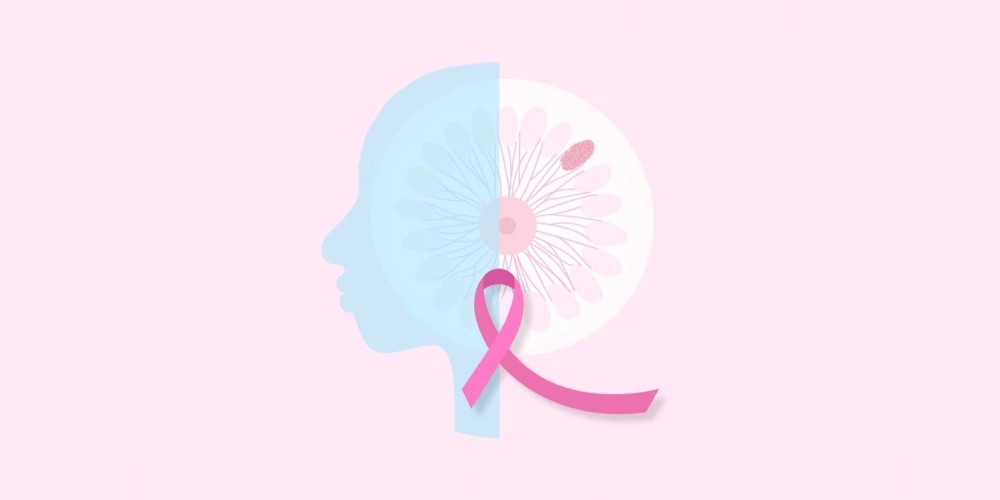Breast cancer stands as one of the most prevalent and formidable health issues affecting women worldwide. With its intricate interplay of genetics, lifestyle factors, and environmental influences, breast cancer poses significant challenges in both its understanding and treatment. Breast cancer is not a singular entity but rather a spectrum of diseases, each with its own distinct characteristics and implications. Each year, millions of women receive diagnoses, facing a journey fraught with uncertainty, fear, and hope. Its far-reaching impact transcends mere statistics, touching the lives of individuals, families, and communities.
Types of breast cancer
Breast cancer encompasses a spectrum of diseases characterized by the uncontrolled growth of abnormal cells in the breast tissue. Understanding the various types of breast cancer is essential for tailoring treatment strategies and prognosticating outcomes effectively.
1. Ductal Carcinoma In Situ (DCIS)
DCIS represents a non-invasive form of breast cancer where abnormal cells are confined within the milk ducts of the breast and have not invaded surrounding tissue. While DCIS is considered a precursor to invasive breast cancer, it is highly treatable with a favorable prognosis.
2. Invasive Ductal Carcinoma (IDC)
IDC is the most common type of breast cancer, accounting for approximately 80% of all cases. It originates in the milk ducts of the breast but has the propensity to invade surrounding tissue, including the fatty tissue and sometimes the lymph nodes. IDC may present as a palpable lump or manifest through changes observed on imaging studies.
3. Invasive Lobular Carcinoma (ILC)
ILC arises from the lobules, the milk-producing glands of the breast. Unlike IDC, which typically forms a distinct mass, ILC often presents as a diffuse thickening of the breast tissue, making it challenging to detect through mammography. ILC has a unique growth pattern and may spread to other parts of the body, including the gastrointestinal tract and reproductive organs.
4. Triple-Negative Breast Cancer (TNBC)
TNBC refers to breast cancers that lack expression of estrogen receptors (ER), progesterone receptors (PR), and human epidermal growth factor receptor 2 (HER2). This subtype accounts for approximately 10-15% of all breast cancers and tends to be more aggressive than other types. TNBC poses challenges in treatment due to the limited efficacy of hormone-targeted therapies, necessitating alternative treatment approaches such as chemotherapy.
5. Hormone Receptor-Positive (HR+) Breast Cancer
HR+ breast cancers express either estrogen receptors (ER), progesterone receptors (PR), or both. These receptors facilitate the growth of cancer cells in response to hormonal stimulation. Hormone receptor-positive breast cancer comprises the majority of breast cancer cases and is often responsive to hormone-targeted therapies, such as selective estrogen receptor modulators (e.g., tamoxifen) and aromatase inhibitors.
6. HER2-Positive Breast Cancer
HER2-positive breast cancers overexpress the human epidermal growth factor receptor 2 (HER2), a protein involved in cell growth and division. HER2 amplification promotes aggressive tumor growth and is associated with a poorer prognosis. However, targeted therapies such as trastuzumab (Herceptin) and pertuzumab (Perjeta) have significantly improved outcomes for HER2-positive breast cancer patients.
7. Inflammatory Breast Cancer (IBC)
IBC is a rare and aggressive form of breast cancer characterized by redness, swelling, and warmth in the breast, resembling inflammation. Unlike other types of breast cancer, IBC typically does not present as a distinct lump, making it challenging to diagnose. IBC requires prompt and aggressive treatment, often involving a combination of chemotherapy, surgery, and radiation therapy.
Causes of breast cancer
Breast cancer is a multifactorial disease influenced by a complex interplay of genetic, hormonal, environmental, and lifestyle factors. While the exact causes of breast cancer remain elusive, numerous risk factors have been identified that may increase an individual’s likelihood of developing the disease.
1. Genetic mutations
Inherited mutations in specific genes, such as BRCA1 and BRCA2, significantly increase the risk of breast cancer. These genes are involved in repairing damaged DNA and maintaining genomic stability. Women with mutations in BRCA1 or BRCA2 have a substantially higher lifetime risk of developing breast cancer compared to the general population.
2. Family history
A family history of breast cancer, particularly among first-degree relatives (parents, siblings, children), can elevate an individual’s risk of developing the disease. While only a small percentage of breast cancers are attributable to inherited genetic mutations, familial clustering of the disease suggests the involvement of genetic predisposition in certain cases.
3. Hormonal factors
Estrogen and progesterone play crucial roles in the development and growth of breast tissue. Prolonged exposure to estrogen, either endogenously (e.g., early menarche, late menopause) or exogenously (e.g., hormone replacement therapy), has been linked to an increased risk of breast cancer. Similarly, women who have not borne children or have their first child at a later age may have a higher risk due to prolonged exposure to estrogen and progesterone.
4. Age
Advancing age is one of the most significant risk factors for breast cancer. The risk of developing breast cancer increases with age, with the majority of cases diagnosed in women over the age of 50. However, breast cancer can occur at any age, and younger women are not immune to the disease.
5. Personal history of breast cancer or certain benign breast conditions
Women who have previously been diagnosed with breast cancer have an increased risk of developing a new primary cancer in the same or contralateral breast. Additionally, certain benign breast conditions, such as atypical hyperplasia or lobular carcinoma in situ (LCIS), may confer an elevated risk of subsequent breast cancer.
6. Radiation exposure
Exposure to ionizing radiation, particularly during adolescence or young adulthood, increases the risk of developing breast cancer later in life. This includes therapeutic radiation treatments for conditions such as Hodgkin lymphoma and other cancers, as well as occupational or environmental exposure to radiation.
7. Obesity and sedentary lifestyle
Obesity and lack of physical activity have been identified as modifiable risk factors for breast cancer. Adipose tissue produces estrogen, and excess body fat can lead to higher circulating levels of estrogen, which may promote the growth of hormone receptor-positive breast cancers.
8. Alcohol consumption
Alcohol consumption, even in moderate amounts, has been associated with an increased risk of breast cancer. The mechanism by which alcohol exerts its carcinogenic effects on breast tissue is not fully understood but may involve hormonal pathways and oxidative stress.
9. Dietary factors
While the relationship between diet and breast cancer risk is complex and not fully elucidated, certain dietary patterns may influence disease risk. A diet high in saturated fats and processed foods and low in fruits, vegetables, and fiber has been associated with a higher risk of breast cancer.
10. Environmental and occupational exposures
Exposure to certain environmental pollutants, such as polycyclic aromatic hydrocarbons (PAHs), bisphenol A (BPA), and phthalates, may contribute to an increased risk of breast cancer. Similarly, occupational exposure to carcinogens, such as those found in the chemical, textile, and agricultural industries, may elevate breast cancer risk among exposed workers.
Symptoms of breast cancer
Breast cancer can present with various signs and symptoms, ranging from subtle changes in breast appearance to more palpable abnormalities. Recognizing these symptoms and promptly seeking medical evaluation is crucial for early detection and improved treatment outcomes.
1. Lump or mass
The most common symptom of breast cancer is the presence of a lump or mass in the breast or underarm area. These lumps may feel firm or hard and may or may not be painful. It’s important to note that not all breast lumps are cancerous, but any new lump should be evaluated by a healthcare professional.
2. Changes in breast size or shape
Breast cancer may cause changes in the size or shape of the breast. This can include asymmetry between the breasts or noticeable changes in contour, such as dimpling, puckering, or indentation of the skin.
3. Skin changes
Breast cancer may cause changes in the texture or appearance of the skin on the breast. This can include redness, warmth, or thickening of the skin, as well as the appearance of ridges, scales, or pitting (resembling the skin of an orange peel).
4. Nipple changes
Changes in the appearance or position of the nipple may be indicative of breast cancer. This can include nipple inversion (turning inward), retraction (pulling inward), or changes in shape or size. Discharge from the nipple, particularly if it is bloody or occurs without squeezing the nipple, should also be evaluated.
5. Breast pain or discomfort
While breast pain is not typically a common symptom of breast cancer, some women may experience persistent pain or discomfort in the breast or nipple area. This pain may be localized or diffuse and may worsen over time.
6. Swelling or enlargement
Inflammatory breast cancer, a rare and aggressive form of breast cancer, may cause rapid swelling or enlargement of the breast. This swelling may be accompanied by redness, tenderness, or warmth in the affected breast.
7. Lymph node enlargement
Breast cancer can spread to nearby lymph nodes, causing them to become enlarged or tender. Lymph nodes in the armpit (axillary lymph nodes) are commonly affected, but swelling may also occur in lymph nodes near the collarbone or above the breastbone.
Stages of breast cancer
Breast cancer staging is a critical process that helps healthcare providers determine the extent of the disease, guide treatment decisions, and prognosticate outcomes. Staging takes into account various factors, including the size of the primary tumor, whether the cancer has spread to nearby lymph nodes, and whether it has metastasized to distant organs. The staging system most commonly used for breast cancer is the TNM staging system, which stands for Tumor, Node, and Metastasis. The stages range from 0 to IV, with subcategories further delineating the extent of the disease.
Stage 0 (Carcinoma in situ)
Stage 0 refers to non-invasive breast cancer, where abnormal cells are confined to the ducts or lobules of the breast and have not invaded surrounding tissue. The two main types of stage 0 breast cancer are ductal carcinoma in situ (DCIS) and lobular carcinoma in situ (LCIS). While not invasive, stage 0 breast cancer may progress to invasive cancer if left untreated.
Stage I
Stage I breast cancer is an early-stage disease where the tumor is small and confined to the breast tissue. It is divided into two subcategories:
- Stage IA: The tumor measures up to 2 centimeters (cm) in size and has not spread to nearby lymph nodes.
- Stage IB: Small clusters of cancer cells are found in the lymph nodes, and the tumor measures up to 2 cm in size, or no tumor is found in the breast but small clusters of cancer cells are found in the lymph nodes.
Stage II
Stage II breast cancer is divided into two subcategories and may indicate a more advanced disease compared to Stage I. It is further subdivided into:
- Stage IIA: The tumor measures between 2 and 5 cm in size and has spread to 1-3 nearby lymph nodes, or the tumor is larger than 5 cm but has not spread to the lymph nodes.
- Stage IIB: The tumor is larger than 2 cm but not larger than 5 cm and has spread to 1-3 axillary lymph nodes, or the tumor is larger than 5 cm but has not spread to the lymph nodes.
Stage III (Locally Advanced Breast Cancer)
Stage III breast cancer is considered locally advanced, indicating that the cancer has spread beyond the breast and nearby lymph nodes but has not yet metastasized to distant organs. It is further subdivided into:
- Stage IIIA: The tumor is larger than 5 cm and has spread to 1-3 axillary lymph nodes, or the tumor is smaller but has spread to 4-9 axillary lymph nodes.
- Stage IIIB: The cancer has spread to the chest wall or skin of the breast, causing ulceration or inflammation, and may involve up to 9 axillary lymph nodes.
- Stage IIIC: The cancer has spread to 10 or more axillary lymph nodes, or has spread to lymph nodes above or below the collarbone (supraclavicular or infraclavicular lymph nodes).
Stage IV (Metastatic Breast Cancer)
Stage IV breast cancer, also known as metastatic or advanced breast cancer, indicates that the cancer has spread to distant organs or tissues, such as the bones, lungs, liver, or brain. It may have originated as stage IV or may have progressed from an earlier stage. While stage IV breast cancer is not curable, treatment aims to control the disease, alleviate symptoms, and prolong survival.
Prevention of breast cancer
Prevention of breast cancer involves adopting healthy lifestyle habits, undergoing regular screenings, and addressing modifiable risk factors that may contribute to the development of the disease. While it’s not possible to completely eliminate the risk of breast cancer, certain strategies can help reduce the likelihood of its occurrence.
1. Maintain a healthy weight
Being overweight or obese, particularly after menopause, is associated with an increased risk of breast cancer. Aim to achieve and maintain a healthy weight through a balanced diet and regular physical activity. Incorporate fruits, vegetables, whole grains, lean proteins, and healthy fats into your diet while limiting processed foods, sugary beverages, and high-fat foods.
2. Engage in regular physical activity
Regular physical activity has been shown to reduce the risk of breast cancer, especially in postmenopausal women. Strive for at least 150 minutes of moderate-intensity aerobic exercise or 75 minutes of vigorous-intensity exercise each week. Activities such as brisk walking, jogging, swimming, cycling, or dancing can help improve overall fitness and lower breast cancer risk.
3. Limit alcohol consumption
Alcohol consumption is a known risk factor for breast cancer, with even moderate alcohol intake associated with an increased risk. If you choose to drink alcohol, do so in moderation. The American Cancer Society recommends limiting alcohol consumption to no more than one drink per day for women.
4. Don’t smoke
Smoking is linked to numerous health risks, including an increased risk of breast cancer. If you smoke, seek support to quit smoking and avoid exposure to secondhand smoke. Quitting smoking can have significant health benefits and reduce the risk of various cancers and other chronic diseases.
5. Breastfeed, if possible
Breastfeeding has been shown to offer protective benefits against breast cancer, particularly in premenopausal women. Aim to breastfeed your baby, if possible, as breastfeeding can help reduce breast cancer risk and provide other health benefits for both mother and child.
6. Limit hormone therapy
Hormone replacement therapy (HRT) and oral contraceptives containing estrogen and progesterone have been associated with an increased risk of breast cancer. If you’re considering hormone therapy for menopausal symptoms or contraception, discuss the potential risks and benefits with your healthcare provider and explore alternative options, such as non-hormonal therapies.
7. Screening and early detection
Regular breast cancer screening can help detect cancer at its earliest, most treatable stages. Follow recommended guidelines for mammograms and clinical breast exams based on your age, family history, and individual risk factors. Discuss your screening schedule with your healthcare provider and be proactive about scheduling regular screenings.
8. Know your family history
A family history of breast cancer or certain genetic mutations, such as BRCA1 and BRCA2, can increase your risk of developing the disease. Be aware of your family history and discuss it with your healthcare provider. If you have a significant family history of breast cancer or other cancers, genetic counseling and testing may be recommended to assess your risk and develop a personalized screening and prevention plan.
9. Eat a healthy diet
Consuming a balanced diet rich in fruits, vegetables, whole grains, and lean proteins can help maintain overall health and reduce the risk of breast cancer. Aim for a diet that is low in saturated fats, processed foods, and sugary snacks. Consider incorporating foods rich in antioxidants, such as berries, leafy greens, and nuts, which may have protective effects against cancer.
10. Be mindful of environmental exposures
Limit exposure to environmental toxins and pollutants that may increase the risk of breast cancer. Minimize exposure to pesticides, household chemicals, and industrial pollutants whenever possible. Choose organic foods, use natural cleaning products, and advocate for policies that promote environmental health and safety.
Diagnosis of breast cancer
The diagnosis of breast cancer involves a comprehensive evaluation that includes clinical examination, imaging studies, and tissue sampling (biopsy) for pathological analysis. Early detection through routine screening and prompt diagnostic evaluation is crucial for improving treatment outcomes and prognosis.
1. Clinical Breast Examination (CBE)
A clinical breast examination is typically performed by a healthcare provider during a routine physical examination. The provider palpates the breasts and surrounding areas to detect any abnormalities, such as lumps, thickening, or changes in texture. While CBE alone is not sufficient for diagnosing breast cancer, it serves as an important initial step in identifying potential signs of the disease.
2. Imaging studies
Imaging studies play a pivotal role in detecting and characterizing breast abnormalities. The primary imaging modalities used in breast cancer diagnosis include:
- Mammography: Mammography is the gold standard for breast cancer screening and detection. It uses low-dose X-rays to produce detailed images of the breast tissue, allowing healthcare providers to identify suspicious areas, such as masses or microcalcifications.
- Ultrasound: Breast ultrasound uses sound waves to generate images of the breast tissue. It is often used as a supplementary imaging tool to evaluate breast lumps detected on mammography or clinical examination, particularly in young women or those with dense breast tissue.
- Magnetic Resonance Imaging (MRI): Breast MRI may be recommended in certain cases, such as for high-risk individuals or to further evaluate abnormalities detected on mammography or ultrasound. MRI provides detailed images of the breast tissue and can help assess the extent of disease in the breast and surrounding areas.
3. Biopsy
Tissue sampling through biopsy is the definitive method for diagnosing breast cancer and determining its subtype and characteristics. There are several types of breast biopsies, including:
- Fine Needle Aspiration (FNA): FNA involves using a thin needle to extract cells from a breast lump or suspicious area for examination under a microscope. It is commonly used to evaluate palpable breast masses.
- Core Needle Biopsy (CNB): CNB uses a larger needle to remove a core tissue sample from a breast abnormality. It provides a more extensive tissue sample than FNA and is often preferred for diagnosing breast cancer.
- Vacuum-Assisted Biopsy (VAB): VAB utilizes a vacuum-powered device to collect multiple tissue samples from a breast lesion, allowing for more accurate diagnosis and characterization of abnormalities.
- Surgical biopsy: In some cases, particularly when other biopsy methods are inconclusive, a surgical biopsy may be performed to obtain a larger tissue sample for examination. Surgical biopsies include excisional biopsy (removing the entire abnormality) or incisional biopsy (removing a portion of the abnormal tissue).
4. Pathological analysis
Tissue samples obtained through biopsy are sent to a pathology laboratory for microscopic examination by a pathologist. Pathological analysis determines whether cancer is present, identifies the type and subtype of breast cancer, assesses the tumor’s grade (degree of aggressiveness), and evaluates hormone receptor status (estrogen receptor, progesterone receptor) and HER2/neu expression. These factors help guide treatment decisions and prognostication.
5. Staging studies
Once a diagnosis of breast cancer is confirmed, additional imaging studies may be performed to determine the extent of the disease (staging). This may include imaging modalities such as computed tomography (CT), positron emission tomography (PET), bone scan, or magnetic resonance imaging (MRI) of the chest, abdomen, and pelvis. Staging studies help assess whether cancer has spread to lymph nodes or distant organs and inform treatment planning.
6. Genetic testing
Genetic testing may be recommended for individuals with a strong family history of breast cancer or specific risk factors, such as young age at diagnosis or multiple primary cancers. Genetic testing evaluates for mutations in genes such as BRCA1, BRCA2, and others associated with an increased risk of breast cancer. Results of genetic testing may influence treatment decisions, risk assessment, and screening recommendations for patients and their family members.
Treatment of breast cancer
The treatment of breast cancer is highly individualized and depends on various factors, including the type and stage of cancer, tumor characteristics, hormone receptor status, HER2/neu expression, genetic mutations, overall health status, and patient preferences. A multidisciplinary approach involving collaboration among different medical specialties, including surgery, medical oncology, radiation oncology, and supportive care, is essential for providing comprehensive and effective treatment.
1. Surgery
Surgery is a primary treatment modality for breast cancer and may involve the removal of the tumor (lumpectomy or partial mastectomy) or the entire breast (mastectomy). Lymph node dissection may also be performed to assess whether cancer has spread to nearby lymph nodes. Types of breast surgery include:
- Lumpectomy: Removal of the tumor and a small margin of surrounding normal breast tissue, while preserving the rest of the breast.
- Mastectomy: Removal of the entire breast tissue, which may be unilateral (one breast) or bilateral (both breasts). Types of mastectomy include total mastectomy, modified radical mastectomy, and skin-sparing mastectomy.
- Sentinel Lymph Node Biopsy: Removal and examination of one or a few lymph nodes to determine whether cancer has spread beyond the breast. If the sentinel lymph nodes are negative for cancer, additional lymph node dissection may be avoided.
2. Radiation therapy
Radiation therapy uses high-energy X-rays or other forms of radiation to kill cancer cells and shrink tumors. It may be recommended following breast-conserving surgery (lumpectomy) to reduce the risk of local recurrence or after mastectomy in certain cases. Types of radiation therapy for breast cancer include external beam radiation therapy (EBRT) and brachytherapy (internal radiation therapy).
3. Chemotherapy
Chemotherapy involves the use of drugs to kill cancer cells or prevent their growth and spread. It may be administered before surgery (neoadjuvant chemotherapy) to shrink tumors, after surgery (adjuvant chemotherapy) to eliminate any remaining cancer cells, or as primary treatment for advanced or metastatic breast cancer. Chemotherapy regimens may include a combination of drugs and may vary based on tumor characteristics and individual patient factors.
4. Hormone therapy
Hormone therapy, also known as endocrine therapy, is used to treat hormone receptor-positive (HR+) breast cancer by blocking the effects of estrogen or lowering estrogen levels in the body. It may be recommended for both premenopausal and postmenopausal women. Hormone therapy options include selective estrogen receptor modulators (SERMs), aromatase inhibitors (AIs), and ovarian suppression therapy in premenopausal women.
5. Targeted therapy
Targeted therapy drugs specifically target molecules involved in cancer growth and progression, such as HER2/neu protein in HER2-positive breast cancer. Targeted therapies for breast cancer include monoclonal antibodies (e.g., trastuzumab), tyrosine kinase inhibitors (e.g., lapatinib), and antibody-drug conjugates (e.g., ado-trastuzumab emtansine). These drugs are often used in combination with chemotherapy or other treatments.
6. Immunotherapy
Immunotherapy works by stimulating the body’s immune system to recognize and attack cancer cells. While not yet widely used for breast cancer, ongoing research is exploring the potential of immunotherapy in certain subtypes of the disease, particularly triple-negative breast cancer (TNBC). Immune checkpoint inhibitors, such as pembrolizumab, may be used in combination with chemotherapy for select patients with advanced or metastatic TNBC.
7. Adjuvant therapy
Adjuvant therapy refers to additional treatments given after primary treatment (surgery or chemotherapy) to reduce the risk of cancer recurrence. It may include radiation therapy, hormone therapy, or targeted therapy, depending on the specific characteristics of the tumor and the risk of recurrence.
8. Supportive care
Supportive care plays a crucial role in managing the side effects of breast cancer treatment and improving the quality of life for patients. This may include medications to manage pain, nausea, and other symptoms, as well as psychosocial support, nutritional counseling, physical therapy, and rehabilitation services.
Conclusion
Breast cancer is a complex and multifaceted disease that affects millions of individuals worldwide. Despite significant advancements in research, diagnosis, and treatment, breast cancer remains a formidable health challenge, underscoring the importance of ongoing efforts in prevention, early detection, and treatment. By raising awareness, promoting early detection, and advocating for access to quality care, we can continue to make progress in the fight against breast cancer and improve the lives of those affected by this disease.














